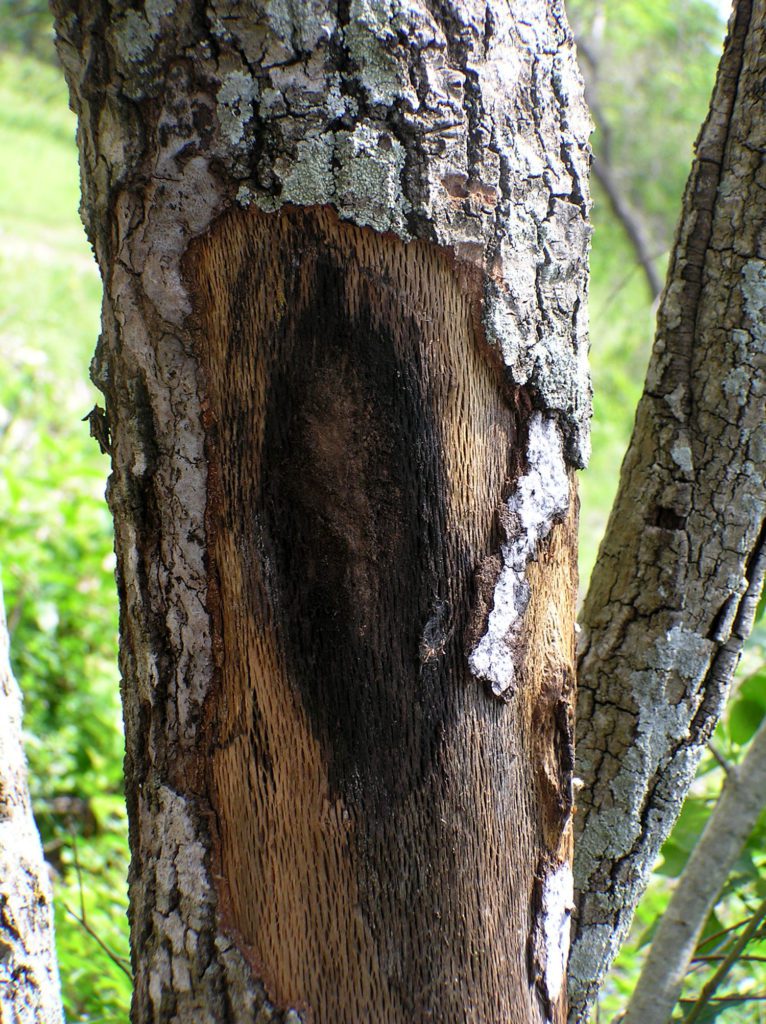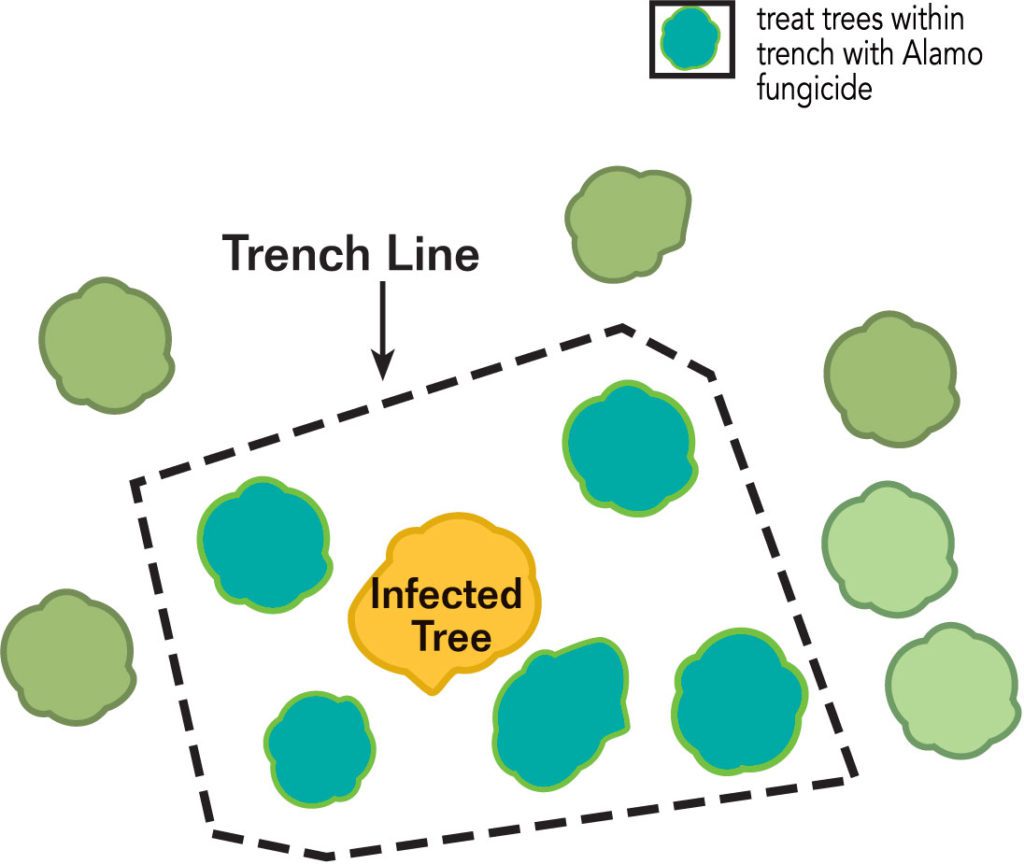
What Causes Oak Wilt?
Oak wilt is a lethal disease caused by the fungus Ceratocystis fagacearum. The fungus invades and disables the water-conducting system in white, red and other oak species. Different species of oaks vary in susceptibility to the disease. Red oaks typically die within 4 to 6 weeks of initial symptom development, while white oaks may survive or take 1 to 6 months to defoliate and die.
Oak wilt is most often spread via root grafts between interconnected and grafted root systems. Root graft disruption and fungicidal treatments aid in preventing the spread of oak wilt.
How Does Oak Wilt Spread?
Root Graft Transmission
Root graft transmission is the most common mode of infection. Over 90% of all new oak wilt infections are transmitted in this manner. A root graft is formed when the roots of two trees of the same species meet and fuse together. The disease is then able to move from an infected tree into an uninfected tree.
Insect Vectors
Oak wilt spores are carried from infected trees by insects (Sap feeding beetles are the most common vector, but bark beetles have also been reported as vectors) into wounds on uninfected trees. In the northern range of the disease overland transmission takes place throughout the spring and early summer, while in the south it can occur any time of the year.

Because beetle vectors (carriers) are attracted to fresh wounds it is important not to prune oaks from April-July (the season that oak wilt spore mats are present in the midwest). Prune only during the dormant season, from August-March.

Symptoms of Oak Wilt
The primary symptom of oak wilt is the wilting of leaves and defoliation. Browning begins on the margin of the leaf and moves inward, and there is a distinct line between dead tissue and living tissue. Leaves normally fall before they have completely browned. In red and pin oaks, wilting progresses from the top of the canopy downward, while in white and bur oaks the wilting may occur on branches scattered throughout the tree.
Streaking of the sapwood, beneath the bark, is a sign of the defense response of the tree, and provides further evidence of oak wilt. An additional sign of the disease is the presence of fungal spore mats on red and pin oaks. They split the bark open and attract insects with their fruity odor.
Oak Wilt Management and Treatment
How Can I Protect My Oak Tree?
- Stop below-ground spread (hire a tree-care professional)
- Treat high-value trees with fungicides
- Don’t move firewood from oak wilt infected areas
- Don’t prune, wound or cut down oaks from early April to mid-July
Isolate and Remove Infected Trees
An important aspect of oak wilt control is physical disruption of the root grafts between infected and healthy trees. Cutting root connections between diseased and healthy oaks is the best way to prevent expansion of existing oak wilt centers. Make sure to hire an experienced tree care professional to conduct this procedure. Contact us to properly diagnose oak wilt and carry out root separation.

Spore mats are produced only on members of the red oak family, and they are the fungal source for all new infection centers created by beetles. It is important to remove all dead (within 1 year) or dying red oaks after separating root grafts. Remove the bark of red oaks that are to be used for firewood or seal the pile with plastic for one year to kill the fungus and prevent contaminated beetles from escaping.
Alamo fungicide
Scientific research conducted by Texas A&M, University of Minnesota, and The US Forest Service has shown that macro-infusion with Alamo fungicide can be used as an effective tool for managing oak wilt and will protect many trees that may otherwise be at risk of becoming infected with the disease.
Red Oak Group: Treat symptom free trees within root graft distance (50 feet) to an infected member of the red oak group.
White Oak Group: Bur and white oaks may be treated preventively or therapeutically.
Contact us to schedule a consultation with a certified arborist.


